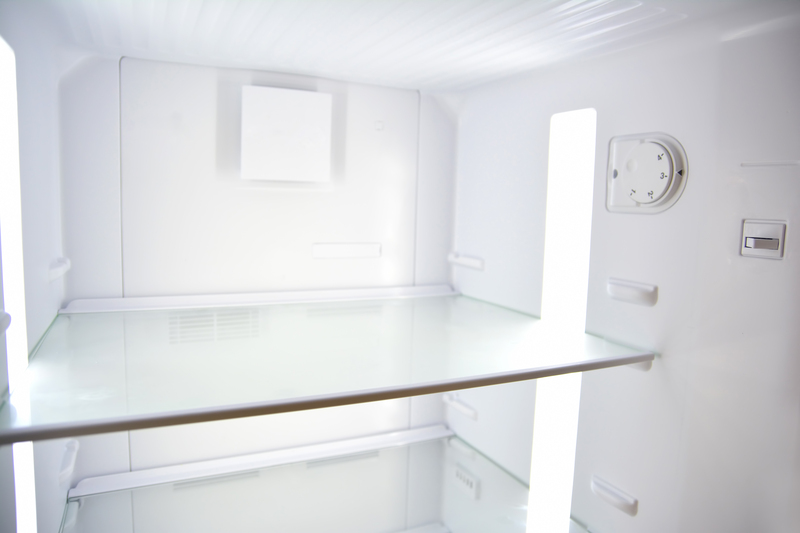Key Steps to Moving a Piano and the Crucial Reasons Not to Do It Solo
Moving a piano is a complex task that demands meticulous planning, special equipment, and expert knowledge. Whether you own a grand piano, upright, spinet, or baby grand, relocating this heavy and delicate instrument takes more than just brute force; it requires careful technique and a deep understanding of your instrument's construction. In this comprehensive article, we'll detail crucial steps for moving a piano and explore why attempting a DIY move is risky. If you value your piano, your property, and your safety, read on to learn all you need to know about relocating a piano safely.

Understanding the Challenges of Piano Moving
Pianos are not just another piece of heavy furniture. A typical piano can weigh anywhere from 300 to over 1,200 pounds and contains thousands of delicately crafted parts. The combination of substantial weight and intricate, sensitive mechanisms makes piano moving a specialized process fraught with risks.
What Makes Pianos So Difficult to Move?
- Weight Distribution: Pianos are top-heavy and often have awkward, uneven weight distribution.
- Shape and Size: Grand pianos can be up to nine feet long, while upright pianos are tall and deep, making them difficult to maneuver through tight spaces.
- Fragile Internal Components: They contain up to 10,000 moving parts, many of which are highly sensitive to shocks, vibration, and changes in position.
- Exterior Vulnerability: The polished wood can easily be scratched or dented.
Because of these factors, even the smallest mistake during a piano move can result in costly damage to the instrument, personal injury, or structural damage to your home.
Essential Steps for Moving a Piano Safely
1. Assess the Move and Plan Ahead
Begin by measuring your piano and your home's doorways, hallways, and stairs. Planning a clear path from the piano's current location to the moving truck (or its final spot) is critical.
- Map Out Obstacles: Identify tight turns, uneven surfaces, stairs, or thresholds that might complicate the move.
- Check for Height and Width Clearance: Make sure the piano fits through all doorways and passageways.
- Assemble Your Team: Even professionals use at least 3-5 people for safe piano moves.
2. Gather the Right Equipment
Specialized moving equipment reduces risk and prevents injury or damage.
- Piano Dolly or Skid Board: These are essential for safely transporting upright and grand pianos.
- Moving Straps: Heavy-duty straps help control the instrument's movement.
- Protective Padding: Thick blankets and padding protect the piano's finish.
- Stair-Climbing Equipment: If stairs are involved, stair rollers or special ramps can help.
- Work Gloves: For added grip and safety while lifting.
- Tools for Disassembly: Many grand pianos require leg and pedal removal before moving.
3. Secure and Prepare the Piano
- Close and Lock the Lid: If possible, secure the piano's keyboard lid to prevent it from opening during the move.
- Wrap the Piano: Use moving blankets and secure them with tape or straps to cover all surfaces.
- Disassemble Carefully: For grand pianos, legs and music stands may need to be detached first. Always store screws and small components in labeled bags.
4. Safe Lifting and Moving Technique
Never lift a piano by its legs or pedals. Use its sturdy ends for lifting, and always keep the instrument in an upright position. Work as a synchronized team.
- Communicate Clearly: Assign clear roles, and use agreed-upon commands for lifting, lowering, and turning.
- Lift with Legs, Not Back: Use proper body mechanics to avoid injury.
- Move Slowly: Never rush or force the piano through tight areas.
5. Navigating Stairs and Tight Spaces
Stairs present the greatest risk during a piano move. Specialized equipment, such as stair rollers or skid boards, is usually required, sometimes along with ramp systems.
- Spotters Are Crucial: Station individuals at both the top and bottom of staircases to direct movement and control the piano.
- Move One Step at a Time: Communicate constantly and proceed cautiously to prevent slips or tipping.
6. Loading into the Moving Vehicle
Position the piano upright in the truck, placing it against a wall for extra stability. Secure it using heavy-duty straps, and ensure no other items can fall onto or strike the piano during transit.
- Keep in Upright Position: Never transport a piano on its back or sides unless manufacturer instructions specify otherwise.
- Double-Check Security: Make sure straps are tight and the instrument cannot move while in motion.
7. Unloading and Setting Up in the New Location
Reverse the process, taking special care with final positioning. Always allow the piano to acclimate to its new environment (especially temperature and humidity) before tuning and playing.
Crucial Reasons Not to Move a Piano by Yourself
Risk of Physical Injury
- Heavy Lifting Dangers: Attempting to move several hundred pounds without proper technique and teamwork can cause serious injuries such as back strain, muscle tears, or even broken bones.
- Piano Instability: Its awkward shape makes it vulnerable to tipping or uncontrollable movement, posing a safety hazard to anyone involved.
- Stair Accidents: Negotiating stairs is especially hazardous. Even one misstep can result in significant injury - or catastrophic damage to the instrument and home.
Damage to the Piano
- Internal Mechanism Sensitivity: The slightest jolt or drop can lead to misaligned keys, broken strings, or damaged soundboards, requiring costly repairs.
- Finish Damage: Unprotected pianos are susceptible to scratches, nicks, or dents.
- Structural Cracks: Awkward pressure while lifting or moving can crack legs, pin blocks, or casters.
Property Damage
- Flooring Issues: Sliding a piano on bare floors may scratch hardwood, crack tiles, or tear carpeting.
- Wall and Doorway Dings: Mishandling a piano in tight spaces can gouge walls and damage door frames.
- Stair Breakage: The immense weight could damage steps and railings.
Insurance and Liability Gaps
Most homeowners' insurance policies do not cover self-inflicted damage to property or items like pianos during a move. Professional piano movers carry specialized insurance protecting you from financial loss if an accident occurs during transport. DIYers have no such safety net.
Potential for Voiding Your Piano Warranty
Some manufacturers' warranties are automatically voided if the instrument is not moved by a certified piano mover. To protect your investment, leave piano relocations to the experts.
The Advantages of Hiring Professional Piano Movers
Specialized Training and Experience
Professional piano movers possess years of experience with all types and sizes of pianos. They know exactly how to disassemble, package, and transport pianos without causing harm. Their expertise provides peace of mind that DIY methods simply cannot guarantee.
Access to Proper Equipment
Piano moving companies use equipment specifically designed for the job--protective padding, dollies, skids, ramps, and harnesses that amateurs are unlikely to have on hand.
Comprehensive Insurance Coverage
With professionals, your piano is insured throughout the moving process. If the unforeseen happens, your prized instrument and property are protected financially.
Efficiency and Time Savings
What may take untrained individuals a full day or longer can often be accomplished by professionals in just a few hours--with far less stress and far greater safety.

Vital Tips for Anyone Planning a Piano Move
- Never Move a Piano Alone: Always seek help from experienced movers or at least enlist several strong helpers.
- Protect Floors and Walls: Use padded blankets and sliders to avoid property damage.
- Take Photos: Before and after images can be invaluable for insurance purposes in case of damage.
- Acclimate Before Tuning: Allow your piano to adjust to its new surroundings for at least 24-48 hours before having it retuned.
- Consult Your Warranty: Ensure your moving method doesn't void your piano's warranty.
Conclusion: Play It Safe--Don't Move a Piano by Yourself
While it might be tempting to cut corners and attempt piano relocation on your own, the risks simply aren't worth it. Moving a piano requires much more than strength; it demands specialized know-how, proper coordination, and the right equipment. From serious physical injuries, permanent piano damage, to costly repairs and property destruction, what might seem like a DIY savings could become a prohibitively expensive mistake. Trust your instrument, your home, and your wellbeing to experienced piano movers.
If you are considering moving your piano, take these steps seriously: research professionals in your area, check customer reviews, and confirm that your mover is insured and experienced. Your piano is an investment--protect it accordingly by moving it the right way!



